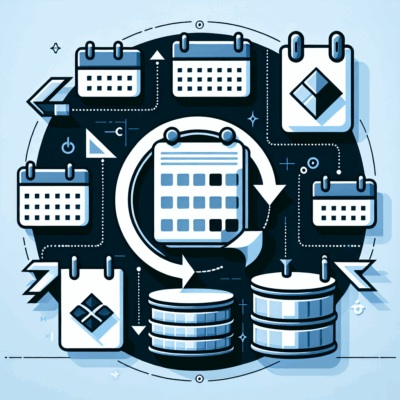Affordable Tenant-to-Tenant Server Migration: A Comprehensive Guide
In today’s fast-evolving digital landscape, businesses frequently need to migrate their data and applications between cloud tenants. Whether it’s due to organizational restructuring, cost optimization, or compliance requirements, tenant-to-tenant server migration is a critical process that demands careful planning and execution. For companies seeking an affordable yet efficient solution, leveraging a cloud migration service or partnering with a reputable data migration company can make all the difference.
This guide explores the key aspects of tenant-to-tenant migration, the role of cloud migration tools, and best practices to ensure a seamless transition without breaking the bank.
Understanding Tenant-to-Tenant Migration
Tenant-to-tenant migration refers to the process of moving data, applications, and configurations from one cloud tenant to another within the same or different cloud environments. This is common in scenarios such as:
- Mergers and acquisitions
- Divestitures or spin-offs
- Compliance or security policy changes
- Cost consolidation or optimization
Unlike traditional migrations, tenant-to-tenant moves require meticulous attention to user identities, permissions, and dependencies to prevent disruptions.
Why Choose a Cloud Migration Service?
A professional cloud migration service can simplify the process by providing:
- Expertise & Automation – Specialized tools and scripts to automate data transfer, minimizing human error.
- Cost Efficiency – Reducing downtime and manual labor lowers overall expenses.
- Security & Compliance – Ensuring data integrity and adherence to regulatory standards.
- Minimal Downtime – Strategically planned migrations to avoid business interruptions.
For businesses without in-house expertise, partnering with a data migration company ensures a smooth transition while keeping costs manageable.
Key Steps in an Affordable Tenant-to-Tenant Migration
1. Pre-Migration Assessment
Before initiating the migration, conduct a thorough audit of:
- Data Volume & Type – Identify what needs to be moved (files, databases, applications).
- User & Permission Mapping – Ensure roles and access rights are correctly transferred.
- Dependencies – Detect integrations or workflows tied to the existing tenant.
2. Selecting the Right Migration Tools
Several cloud migration tools can help automate the process, including:
- Microsoft Azure Tenant-to-Tenant Migration Tools
- AWS Application Migration Service
- Third-party solutions like BitTitan or SkyKick
Evaluate cost, scalability, and compatibility before choosing a tool.
3. Data Migration Strategy
Decide between:
- Lift-and-Shift – Moving data as-is with minimal modifications.
- Replatforming – Optimizing applications for the new tenant.
- Hybrid Approach – Combining both methods for efficiency.
4. Testing & Validation
Before finalizing the migration:
- Run pilot tests on non-critical data.
- Validate user access and functionality.
- Check for data corruption or missing files.
5. Cutover & Post-Migration Support
- Schedule the final migration during low-traffic periods.
- Monitor performance post-migrat
Cost-Saving Tips for Tenant-to-Tenant Migration
- Use Native Cloud Tools – Many providers offer free or low-cost migration utilities.
- Prioritize Critical Data – Migrate essential data first to minimize licensing and storage costs.
- Leverage Automation – Reduce manual effort and associated labor expenses.
- Negotiate with Vendors – Some data migration companies offer discounts for bulk or long-term engagements.
Common Challenges & How to Overcome Them
1. Data Loss or Corruption
Solution: Implement incremental backups and verify data integrity at each stage.
2. Permission & Access Issues
Solution: Use identity mapping tools to ensure seamless user transitions.
3. Downtime & Business Disruption
Solution: Opt for phased migrations or hybrid setups to maintain operations.
4. Unexpected Costs
Solution: Set a clear budget and monitor expenses throughout the project.
The Role of a Data Migration Company
For businesses lacking internal resources, a data migration company can provide:
- End-to-End Management – Handling everything from planning to execution.
- Custom Solutions – Tailoring the migration to specific business needs.
- Ongoing Support – Troubleshooting post-migration issues.
Conclusion
Affordable tenant-to-tenant server migration is achievable with the right strategy, tools, and expertise. By leveraging a cloud migration service or partnering with a trusted data migration company, businesses can ensure a secure, efficient, and cost-effective transition. Whether you’re consolidating tenants, complying with new regulations, or optimizing cloud costs, careful planning and execution will minimize risks and maximize ROI.
Investing in a well-structured cloud migration plan today can save significant time, money, and headaches in the long run—ensuring your business remains agile and competitive in an ever-changing digital world.
Frequently Asked Questions
- What is tenant-to-tenant server migration?
Tenant-to-tenant server migration is the process of moving data, applications, and configurations from one server tenant to another, typically within the same cloud platform, while minimizing downtime and costs. - Why is affordable tenant-to-tenant migration important?
Affordable migration ensures businesses can transition seamlessly without excessive expenses, making it accessible for small to medium-sized enterprises (SMEs) to optimize their cloud infrastructure. - What are the key steps in a cost-effective tenant-to-tenant migration?
Key steps include pre-migration planning, data backup, using automated tools for transfer, testing post-migration, and optimizing resource allocation to reduce unnecessary costs. - How can I ensure minimal downtime during migration?
Schedule migrations during off-peak hours, use incremental data transfers, and employ failover strategies to maintain service availability while the migration is in progress.





